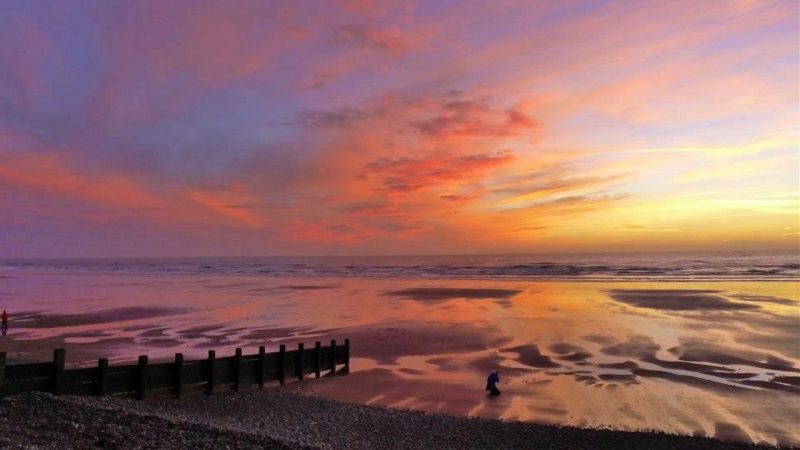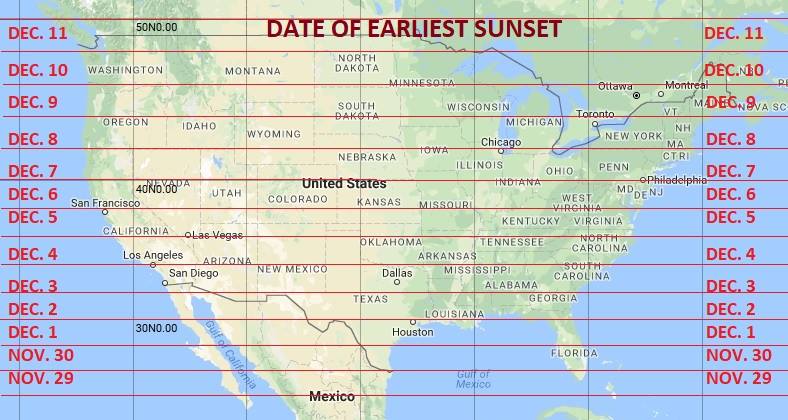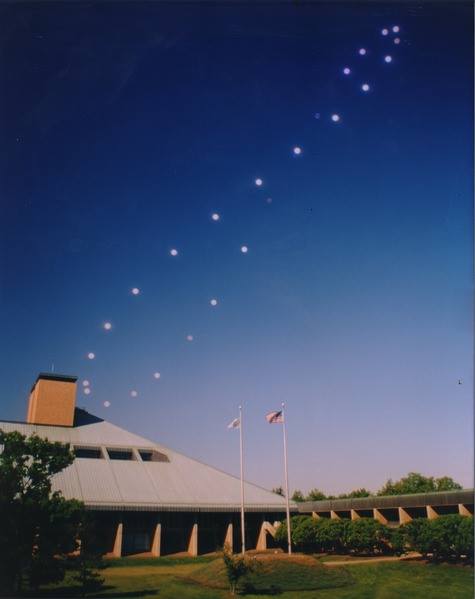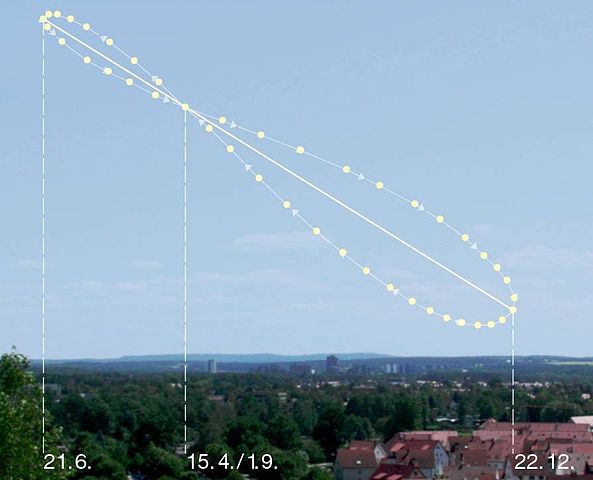The Sun Risewas the Sun Sets It Rushes to Where It Rises Again

The wintertime solstice is the shortest day. Information technology offers the shortest flow of daylight. Only, unless y'all alive close to the Arctic Circumvolve or Antarctic Circumvolve, your earliest sunsets aren't on or fifty-fifty near the solstice itself. Instead, your primeval sunsets will come before the winter solstice. The verbal date of earliest sunset depends on your latitude. If you live in the southernmost U.Due south., or a comparable breadth (say, around 25 or 26 degrees north latitude), your earliest sunsets are in late November. If you're farther n – say, around xl degrees due north breadth – your primeval sunsets are around December 7.
EarthSky lunar calendars are cool! They brand slap-up gifts. Order now. Going fast!

And if yous live in the Southern Hemisphere, your earliest sunrises are coming effectually now. Southern Hemisphere? Click here.
Why isn't the primeval sunset on the year's shortest day? To understand it, endeavor thinking near information technology in terms of solar noon or midday, the time midway between sunrise and dusk, when the sun reaches its highest point for the day.

A clock ticks off exactly 24 hours from one apex to the next. But the actual days – as measured by the spin of the Earth – are rarely exactly 24 hours long.
And so the exact fourth dimension of solar noon, every bit measured by Earth's spin, shifts in a seasonal fashion. If you measured Earth's spin from one solar noon to the next, you lot'd find that – around the time of the December solstice – the time period between consecutive solar noons is actually one-half a infinitesimal longer than 24 hours.
So – 2 weeks before the solstice, for example – the sunday reaches its noontime position at 11:52 a.thou. local standard time (the time on your clock wherever you lot are around the globe). Ii weeks later – on the winter solstice – the sun reaches its noontime position at 11:59 a.yard. That's vii minutes subsequently.
The later clock time for solar noon besides means a later clock time for sunrise and dusk.
Visit Sunrise Sunset Calendars for the December 2020 calendar, giving you the clock time for solar noon (check the solar noon box).
The result: earlier sunsets before the winter solstice and increasingly later sunrises for a few weeks subsequently the winter solstice.
The exact appointment of primeval sunset varies with latitude. But the sequence is always the same. For the Northern Hemisphere, earliest dusk in early Dec, wintertime solstice, latest sunrise in early January.

Meanwhile, if you're in the Southern Hemisphere, take nearly everything nosotros say hither and apply it to your winter solstice in June. For the Southern Hemisphere, the earliest sunsets come before the winter solstice, which is typically around June 21. The latest sunrises occur afterward the June winter solstice.
During the month of Dec, it's nearly summertime in the Southern Hemisphere; the summer solstice comes this month for that hemisphere. So sunsets and sunrises are shifting in a similar way. For both hemispheres, the sequence in summer is: earliest sunrises before the summer solstice, then the summer solstice itself, and then latest sunsets after the summertime solstice.
As e'er, things become tricky if yous look closely. Assuming you're at a mid-temperate latitude, the earliest sunset for the Northern Hemisphere – and earliest sunrise for the Southern Hemisphere – comes about two weeks before the Dec solstice, and the latest sunrise/latest sunset happen well-nigh ii weeks after.
Simply at the other end of the year, in June and July, the time flow is not equivalent. Again assuming a mid-temperate latitude, the earliest sunrise for the Northern Hemisphere – and primeval sunset for the Southern Hemisphere – comes but well-nigh i week before the June solstice, and the latest sunset/latest sunrise happens about one week after.
The time departure is due to the fact that the December solstice occurs when Earth is about its perihelion – or closest bespeak to the sun – around which time we're moving fastest in orbit. Meanwhile, the June solstice occurs when Earth is nigh aphelion – our farthest point from the sun – effectually which time nosotros're moving at our slowest in orbit.

In short, the earliest dusk/winter solstice/latest sunrise and primeval sunrise/summertime solstice/latest sunset phenomena are due to the fact that truthful solar days are longer than 24 hours long for several weeks before and afterwards the solstices. At and around the solstices, the Globe must rotate farther on its axis for the sun to return to its daily noontime position, primarily because the dominicus is appreciably due north or south of the Globe's equator.
However, perihelion accentuates the result around the December solstice, giving a solar day length of 24 hours 30 seconds. And aphelion lessens the outcome around the June solstice, giving a day length of 24 hours 13 seconds.
Bottom line: The primeval sunsets and latest sunrises don't come on the wintertime solstice, the shortest day of the year. Instead, earliest sunsets come some weeks before the winter solstice. Latest sunrises come up some weeks afterward information technology.
Here are more details about the earliest sunsets.
mcenteegerentow1942.blogspot.com
Source: https://earthsky.org/earth/winter-solstice-and-late-sunrise/
0 Response to "The Sun Risewas the Sun Sets It Rushes to Where It Rises Again"
Post a Comment